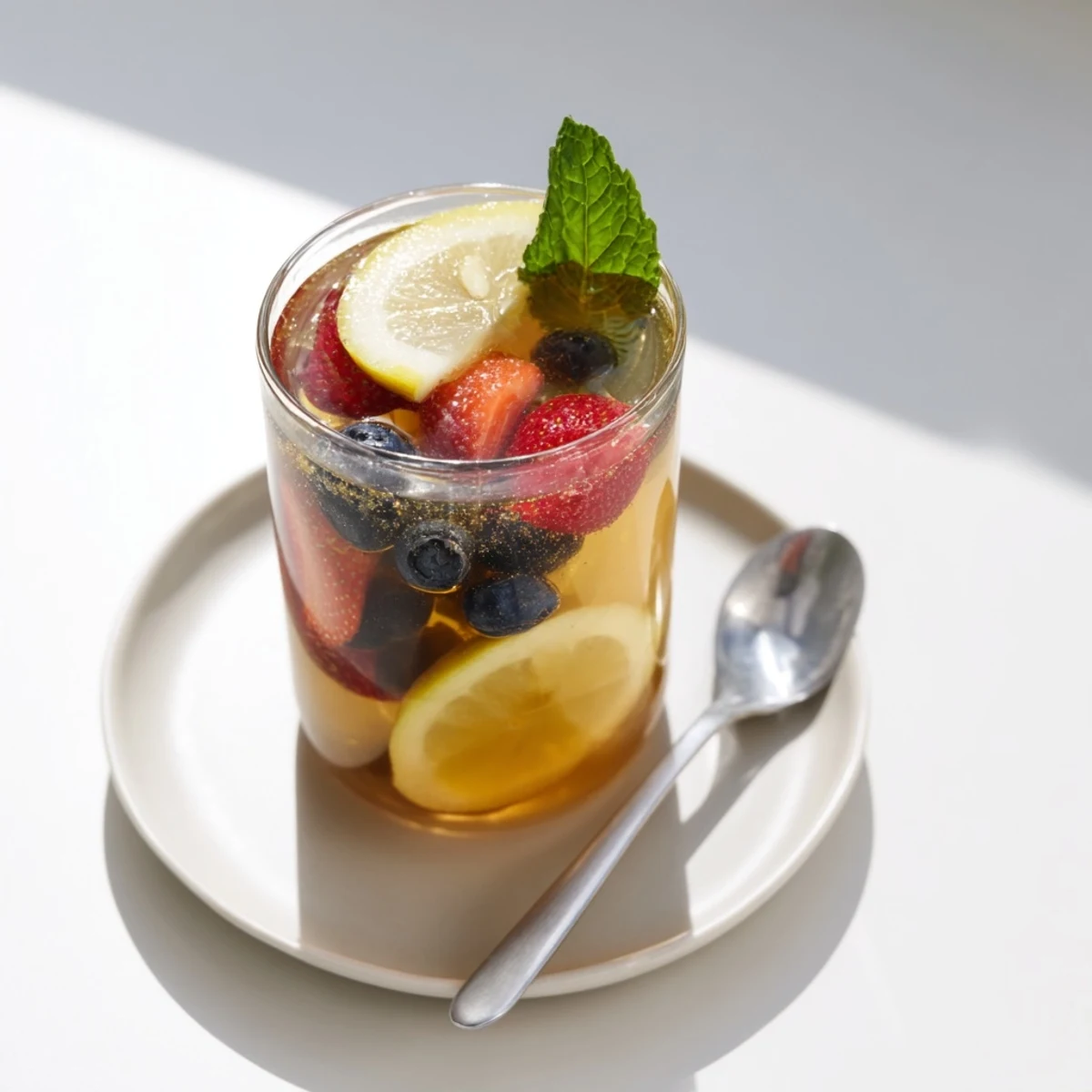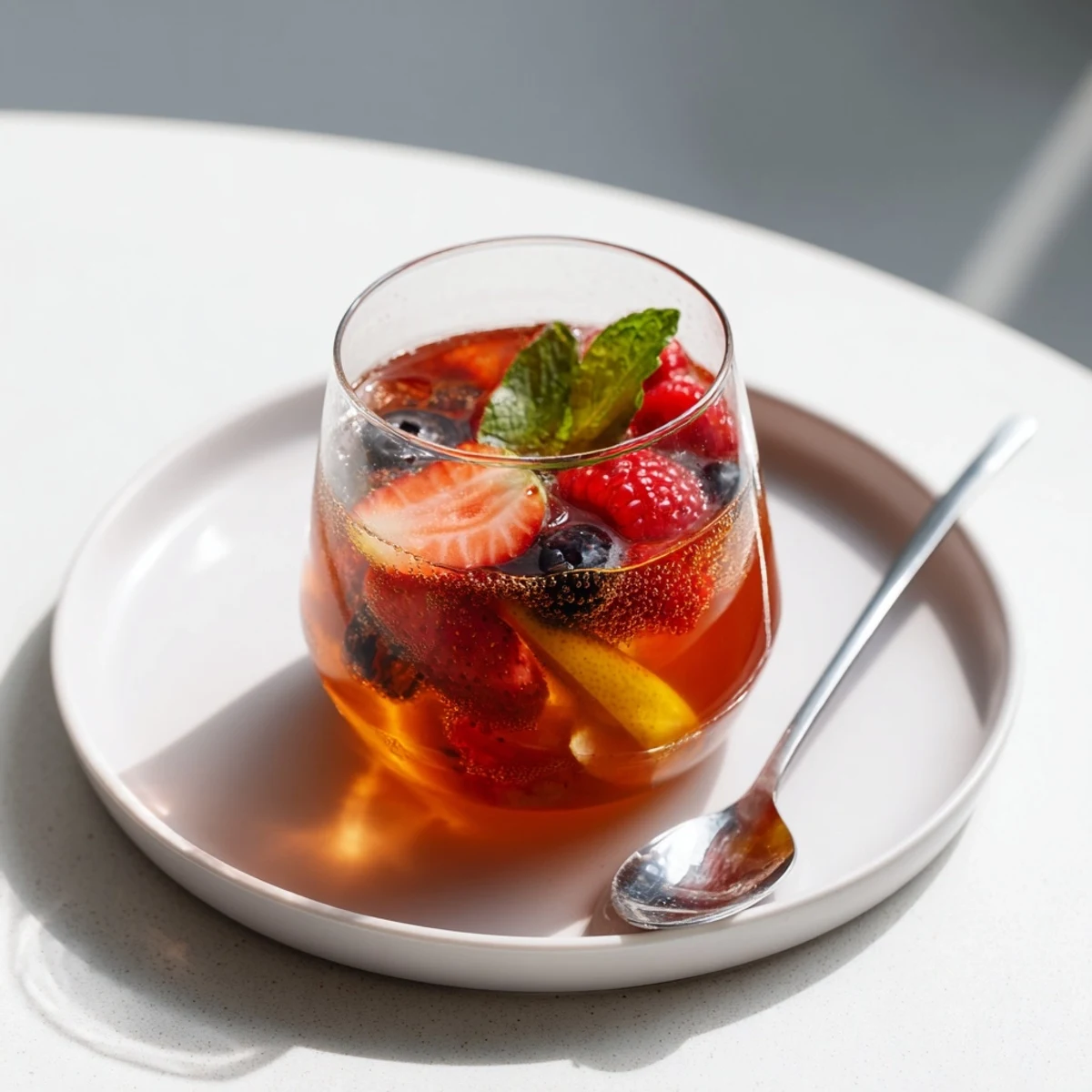 Save to Pinterest
Save to Pinterest A refreshing collection of naturally fermented beverages inspired by kombucha, perfect for enjoying as healthy, alcohol-free mocktails with complex flavors and gentle fizz.
I discovered homemade kombucha-style mocktails as a fun way to offer healthier drinks at gatherings. Brewing these at home has become a tradition for sharing something unique and delicious with friends who appreciate non-alcoholic options.
Ingredients
- Filtered water: 2 liters, essential for a clean-tasting base
- Black or green tea bags (or loose-leaf tea): 8 bags or 2 tablespoons, for classic kombucha flavor
- Granulated sugar: 200 g (1 cup), feeds the fermentation process
- Kombucha SCOBY or starter liquid: 1 SCOBY or 200 ml unflavored store-bought kombucha
- Fresh berries: 100 g, optional for vibrant fruitiness
- Lemon or lime: 1, thinly sliced, for bright acidity
- Fresh ginger: 1 small knob, sliced, for gentle spice
- Fresh mint or basil: 1 sprig, adds a refreshing herbal note
- Fruit juice: 2 tablespoons (pomegranate, cherry, apple), enriches color and taste
- Dried hibiscus petals: 1 tablespoon, beautiful color and tartness
- Cinnamon stick or whole cloves: 1 stick or 3–4 cloves, for warming spice
Instructions
- Brew the tea:
- Boil 2 liters of filtered water. Add tea bags or loose-leaf tea and steep for 10 minutes. Remove tea bags or strain out leaves.
- Add sugar:
- While the tea is hot, stir in the sugar until fully dissolved. Let the sweetened tea cool to room temperature.
- Combine and ferment:
- Pour the cooled sweet tea into a large, clean glass jar. Add the SCOBY and starter liquid (or store-bought kombucha).
- Cover and store:
- Cover the jar with a clean cloth or paper towel secured with a rubber band. Store at room temperature, away from direct sunlight, for 5–7 days.
- Check and taste:
- After 5 days, taste your brew daily. When it is tangy and slightly fizzy, it is ready for the next step.
- Flavor and bottle:
- Remove the SCOBY and 200 ml of kombucha for your next batch. Add chosen fruits, herbs, or spices to the kombucha.
- Bottle and ferment:
- Pour into clean bottles, leaving 2–3 cm headspace. Seal tightly. Ferment at room temperature for 1–3 more days for extra carbonation.
- Refrigerate and serve:
- Once desired carbonation is reached, refrigerate bottles. Strain out solid flavorings before serving.
 Save to Pinterest
Save to Pinterest My family loves tasting the latest flavor combinations and guessing which fruit or herb is featured. These mocktails have become a staple at celebrations, where everyone can enjoy a fizzy and flavorful glass together.
Required Tools
Large glass jar (2–3 liters), fine mesh strainer, funnel, clean glass bottles with tight lids, measuring cups and spoons
Allergen Information
Contains caffeine from tea. May have traces of gluten if flavored teas are used, and possible cross-contamination with nuts or other allergens depending on flavoring choices—always check all labels.
Nutritional Information (per serving)
Calories: 45, Total Fat: 0 g, Carbohydrates: 11 g, Protein: 0 g
 Save to Pinterest
Save to Pinterest Enjoy your homemade kombucha-style mocktail as a vibrant, healthy alternative for any occasion. It is perfect for sipping with friends or as a refreshing treat any time of day.
Ask About This Recipe
- → How do I achieve the best carbonation?
Allow the bottles to ferment for extra 1–3 days at room temperature, then refrigerate. Make sure bottles are tightly sealed.
- → Can I use different teas?
Black or green tea work best, but experiment with herbal teas for unique flavors—avoid those with oils or artificial additives.
- → What fruits and herbs pair well?
Try combinations such as berry-mint, ginger-lime, apple-cinnamon, or your favorite seasonal fruits and herbs.
- → Is a SCOBY necessary?
A SCOBY or a small amount of unflavored kombucha helps kickstart fermentation and provides depth of flavor.
- → Are there any allergens to consider?
Check ingredient labels, especially teas and added flavorings, for gluten, nuts, or other allergens. Tea contains caffeine.
- → How long does fermentation take?
Initial fermentation takes 5–7 days; flavoring and bottling require an additional 1–3 days for carbonation.